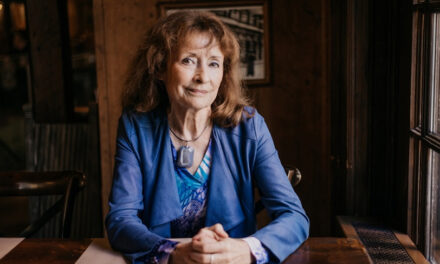Although fake news has existed since the time of news itself, the way and speed of their spread has changed a lot nowadays. With subtle irony, we could also say that it has accelerated slightly.
If one does not want to be left behind in the ever-increasing news competition, one must be lightning fast, and many people share fake content without even looking at it or reading it. Let's face it: since social networking sites have become the main source of information, people's orientation has become frighteningly narrow.
According to Wardle, the 8Ps can be held responsible for the birth of fake news , such as dirty journalism, parody, provocation, passion, partisanship, profit, political influence and propaganda. And among the spreaders of fake information there are conscious deceivers as well as well-intentioned ones, perhaps possessed, or those with a sickly altered psyche, but the really good question is why do we believe fake news?
Is it because of the increasingly complicated and therefore less comprehensible scientific knowledge? Do we feel smarter than them? Are they more exciting? Do they seem more logical? Does a scientist agree with them? Do celebrities believe it too? Maybe our psychological need to believe? Or does it happen as a result of "information-washing"? (This is the phenomenon where false and misleading content enters the mainstream media following second-hand coverage.) Either way, we live in the age of fake news, and defending against it is not at all easy.
Without claiming to be complete, we recall some famous hoaxes, first of all my personal favorite, the 1987 pseudo-documentary called Oil Eaters (Ropaci) .
The work, only half an hour long, is a brilliant college exam film directed by the then 22-year-old Czechoslovak Jan Svěrák, and his work soon became an international success. between the presentation in 1988 and the self-revelation of the makers, the film created a national sensation, and even Hungarian Television dealt with the topic several times in its program Napszárta, biologists and geneticists discussed Pacurofagus oxitoxicus about a new species he met, i.e. the oil eater.
In the film, a seemingly real research team follows the oil guzzler, recruited from representatives of several scientific fields. Then, in the devastated mining region of northern Bohemia, they first interview an eyewitness, the night watchman of the factory, who would basically feel good in the noisy, smelly environment, but the oil guzzlers: they are getting more and more naughty, they step on plastic parts, rubber boots left outside, and so on. Plastic is the favorite of this little animal, whose breathing is based on carbon monoxide. Finally, they find a young specimen in the coal mine, but it gets sick during the tests, so the researchers hold it to the exhaust pipe of the car and breathe it.
The people devoured the story, and after the film was shown, the television lines were buzzing with calls: where can you get such cute little monsters? The only ones who doubted were those for whom evolution was not just a school memory and a vague philosophical idea, but who thought it through with common sense: how can a new species develop immediately at the level of complexity of the mammalian organism, without simpler organisms with similar characteristics?
Orson Welles' radio play
On October 30, 1938, at 8:00 p.m. Eastern time, Orson Welles took a seat with a small group of actors in front of the microphone in the CBS (Columbia Broadcasting System) studio in New York. He brought with him Howard Koch's loose adaptation of HG Wells' fantasy novel The War of the Worlds. And his extraordinary dramatic talent. The actors hoped that, with the story of the work and their own acting skills, they would entertain their listeners for an hour with an incredible, old-fashioned story suitable for Halloween.
Then, to their greatest surprise, they learned that the bulletin they had issued, in which they reported on the Martian invasion, was taken seriously by thousands across the country. For a few horrible hours, people from Maine to California believed that hideous monsters armed with death rays would destroy all armed resistance, that there was no escape from them, and that the end of the world was near. After all, the radio announced…
Before the broadcast ended, thousands of people across the United States were praying, crying, and fleeing in desperation to escape death. Many people went to their loved ones, others said goodbye on the phone, warned, rushed to inform the neighbors (…) At least six million people heard the broadcast, and at least one million of them were frightened or embarrassed. The next morning, the newspapers wrote about the tsunami of alarm sweeping across the nation, and it became obvious that it was a national panic. The Federal Telecommunications Commission called the incident regrettable," wrote pollster Hadley Cantril in his study entitled Attack on Mars, also available in Hungarian.
The real Mao
Szilveszter Siklósi's 1994 pseudo-documentary based on the clichés of BBC historian reports and well-known historical investigative reports from educational channels such as Spektrum TV tried to draw attention to the fact that any hoax can be believed with the media's toolbox, as long as it is presented authentically and coherently live. Even modern technology is not absolutely necessary: there are no computer tricks in the film, nor even more complicated cuts, just for the non-contradiction of the events, and documentary film clichés (actors speaking in English, dubbed with understatement, black-and-white "historical authenticity" photographs, the authenticity of known history shaking of trust) builds. The majority of the viewers found all of this to be credible and convincing, and even those with an eye began to get suspicious only around the middle of the film after hearing the increasingly absurd claims: for example, Mao still lives as a monk in a Buddhist monastery, has paranormal abilities, and there is a stalactite-shaped crystal in the middle of his stomach.
The film is about a professor of history at the University of Michigan (Jonathan W. Highstone), who during his years of long and rather dangerous research makes a startling and history-changing discovery about one of the most significant conflicts in world history, the Cold War: the real Mao is actually - according to the film in fact - he died during the long march and his evil and criminal brother took his place in the leadership of the Chinese Communist movement. And so on…
Lajos Korózs and Athina
Who does not remember the spread of horror stories committed by the MSZP politician with Athina Németh, during which, among other things, it was claimed that newly operated patients are sent home from Hungarian hospitals unstitched. Last summer, in connection with the increase in hospital bed capacity due to the coronavirus, the Socialists published a video in which a lady posing as an ambulance nurse told horror stories, but in response to the video, the OMSZ statement revealed that Athina Németh is not a member of the Emergency Service, but is not included in the Hungarian Neither in the register of the Chamber of Health Professionals nor the State Health Care Center.
The MSZP later removed the video, but Athina claimed to be an employee of the Samaritanus Rescue Service, who also distanced themselves from her in their statement. However, even this was not enough, because the lady, together with Lajos Korózs, continued to claim that she works for a domestic emergency service as a guest of ATV's Ejenes Beszéd program. The ORFK initiated the procedure following Emmi's report, and Korózs later shifted the responsibility entirely to Athina Németh.

Source: hoaxinfo.wordpress.com












